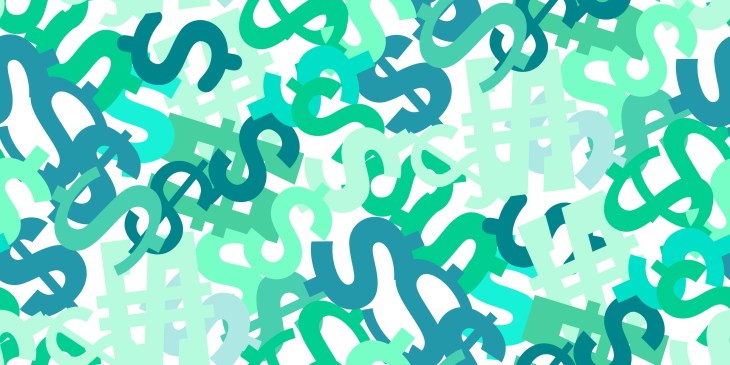Stripe, the payments behemoth valued at $95 billion a year ago and now reportedly inching closer to an IPO, today announced a new product that fills in some significant gaps in its play to be the financial services layer for merchants and other businesses whose models are based on enabling transactions. It’s taking the wraps off Financial Connections, which will let Stripe’s customers connect directly to their customer’s bank accounts, to access financial data to speed up or run certain kinds of transactions.
These include verifying accounts for payments and payouts; to check balances ahead of a payment being made to ensure there’s enough money there; to confirm account ownership. Details like these can in turn be used to help underwrite risk for loans; to track spending patterns and automatically pay bills; and more — in other words, financial data that’s useful or necessary to run financial transactions over other Stripe services like Stripe Connect, ACH payments or Stripe Capital-powered loans.
On the part of customers of Stripe’s customers, when asked, they will input their bank account details and get specific information on how that will be used, Stripe said. (Side note: It will be interesting to see whether U.S. consumers will be happy with sharing that information in situations where it hasn’t been previously.)
The service is going live first in the U.S., where Stripe said it will work with over 90% of all bank accounts. It will be charged on a pay-as-you-use basis — bank account verifications and account information will come at $1.50 per API call; account balance retrieval is 10 cents per API call; transaction pulls have yet to be launched so pricing is TBA — and bigger customers can buy on an enterprise contract.
We asked but Stripe declined to comment on when and if Financial Connections would be extended to other markets, which is perhaps not a surprise, given how much banking systems differ country to country.
Financial Connections is coming at an interesting moment in the world of digital payments. E-commerce definitely created a market for enabling easier payments online. And while that opened the door to digital wallets like PayPal’s and some direct payments from banks in some countries, lot of the spoils of that growth has been passed into services based around card payment rails.
But as the space has evolved, we’ve seen an ever greater proliferation of technology, services, regulations and consumer appetite for more than that. Digital banking, investing, cryptocurrency trading, new approaches to getting loans, managing expenses — all of these and more are examples of how digital services have gotten more sophisticated, and the demands we have from them have, too. (And e-commerce has also not stood still: Buy now, pay later services and a lot more have also entered that world to create more flexible services to net more transactions amid tighter competition and thinner margins.)
There are more of these popping up all the time. Just yesterday, I wrote about an interesting startup called Kevin (okay, kevin.) that’s building a whole new set of payment rails and APIs for account-to-account payments that link straight into bank accounts, bypassing card rails and legacy account-to-account payment methods that are harder to implement.
In that context, Financial Connections is a timely tool for Stripe to launch. It’s part of the wave of new services (like Kevin) that are creating a more programmatic approach to digital transactions and related financial services. While companies would have been able to get, say, transaction data from a bank before, now that can be handled in a faster and more automated way.
“Businesses have been asking us for an easy, secure way to connect to and verify their customers’ bank accounts,” said Clara Liang, business lead at Stripe, in a statement. “Stripe Financial Connections delivers just that.”
Indeed, it speaks to the needs of its current customers; but importantly for Stripe, it creates a tighter ecosystem of services around products that are already being used by them, a one-stop-shop so that they do not need to tap other parties’ tools — such as those offered by others like Plaid — to integrate that functionality. Stripe has been making a number of acquisitions to bring in extra functionality into its platform to close up some of the gaps — for example almost exactly a year ago it acquired TaxJar to help automatically calculate sales tax and provide related tools to its customers — but it looks like Financial Connections was built in-house, but powered by MX and Finicity (as pointed out by Mary Ann here).
Stripe’s selling point for these tools, beyond a more seamless integration with its other products, is that it helps its customers make more transactions. It claims Connect customers that have already been working with the service have reduced payout failures by 75%; early Capital users are seeing 55% larger loan offers because of the extra data they’re using to inform decisions.
All of that means more transactions on Stripe’s platform itself. The margins might be thin on any digital payment — one reason why even a company that looks like it’s growing and doing a lot of business might still fail: The numbers need to be huge to work out in its profitable favor — but this is why so many payments companies work on vast scale, and why building in a number of extra valued-added services in hopes of them getting picked up by customers (and customers’ customers), as Stripe is doing here, is smart business, one way that it hopes to sustain itself for the long (and likely public) haul.
